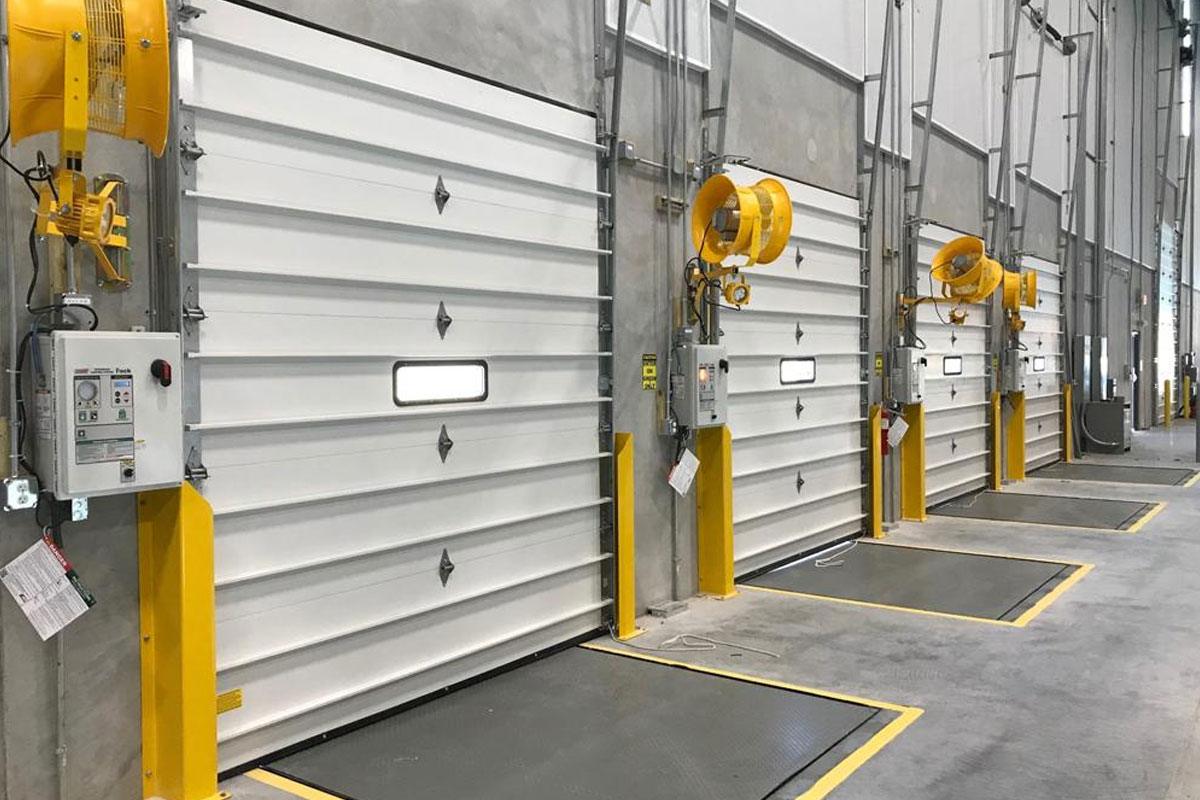Loading docks are at the heart of every warehouse and distribution center, serving as the critical connection between indoor operations and the outside world. Because of this, loading dock equipment must withstand constant use, heavy truck traffic, and changing weather conditions. Two of the most vital components in maintaining efficiency and protection are dock shelters and dock seals.
Selecting the right models is not only a matter of initial investment but also of long-term value. The right features can reduce operational costs, extend equipment life, and safeguard both employees and cargo. Here’s a closer look at the most important features to prioritize when evaluating dock shelters and dock seals.
1. Material Durability and Resistance
High-quality construction materials determine how long a dock shelter or dock seal will last under demanding conditions. Vinyl and coated fabrics are popular for their resistance to tearing, abrasion, and exposure to weather. In facilities with heavy traffic or extreme climates, industrial-grade fabrics with reinforced layers provide better performance.
Durable compression pads in dock seals and wear-resistant curtains in dock shelters ensure they can handle hundreds of dockings without losing shape or effectiveness. Investing in resilient materials may cost more upfront but reduces replacement and maintenance expenses over time.
2. Energy Efficiency and Climate Control
Loading docks are often a major source of energy loss. When gaps form between the trailer and the building, conditioned air escapes while outside air enters. This not only affects energy bills but also creates uncomfortable working conditions.
Dock seals provide a tight compression fit that reduces airflow, making them ideal for facilities where climate control is critical — such as cold storage, food distribution, or pharmaceutical warehouses. Dock shelters, with their flexible curtains, accommodate a wider variety of truck sizes while still reducing drafts and energy loss.
By improving the thermal seal at the dock, both options help facilities maintain consistent internal temperatures and meet energy-efficiency goals.
3. Flexibility and Truck Compatibility
Not all facilities receive the same type of vehicles. Some handle standard trailers, while others manage box trucks, oversized vehicles, or international shipments. Dock shelters offer greater flexibility since they can adapt to different trailer sizes and configurations.
On the other hand, dock seals create a tighter seal but work best with uniform truck sizes. When selecting the right product, facility managers must evaluate the range of vehicles that typically dock at their site. A mismatch can lead to inefficiency, increased wear, and higher operational costs.
4. Safety Enhancements
Worker safety should always be at the forefront of equipment selection. Poorly sealed docks can expose employees to slip hazards, extreme temperatures, and even pests. By minimizing gaps, dock shelters and dock seals reduce these risks.
Additionally, shelters equipped with impact-resistant head and side frames ensure that accidental misalignments during docking don’t cause structural damage or endanger workers. Pairing seals and shelters with safety equipment like dock bumpers and vehicle restraints further enhances protection.
5. Ease of Maintenance
Maintenance costs directly affect the long-term value of dock equipment. Look for dock shelters and dock seals designed with replaceable components, such as wear pleats or pads, which allow for inexpensive repairs rather than full replacements.
Routine inspections and simple cleaning schedules can significantly extend service life. Facilities that choose low-maintenance designs save money and reduce downtime.
6. Compliance and Standards
Reputable manufacturers design their equipment in line with safety and performance standards, including OSHA guidelines. Ensuring that your dock shelters and dock seals meet these standards not only supports compliance but also demonstrates a commitment to workplace safety and operational excellence.
7. Total Cost of Ownership
It’s easy to focus on upfront costs, but true long-term value comes from evaluating the total cost of ownership. Dock shelters and dock seals that are durable, efficient, and safe may carry a higher initial price but deliver savings over years of reliable service. Lower utility bills, reduced maintenance, and fewer safety incidents all contribute to better return on investment.
Conclusion
Investing in the right dock shelters and dock seals is not simply about filling a gap between a truck and a building. It’s about protecting workers, preserving energy, and improving the overall performance of a facility. By focusing on durability, energy efficiency, compatibility, safety, and ease of maintenance, warehouse managers can secure equipment that delivers value for years to come.
For companies aiming to optimize their loading dock operations, prioritizing these features ensures not just short-term improvements but also long-lasting benefits for the entire supply chain.


